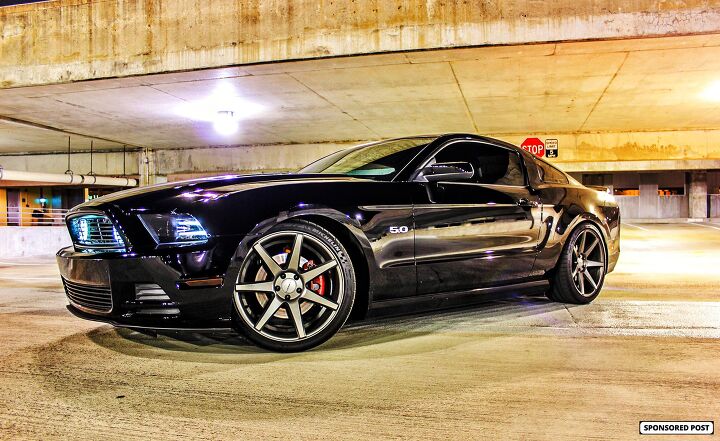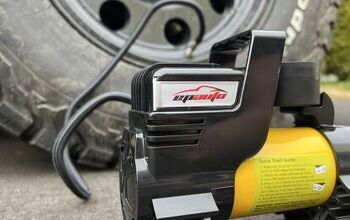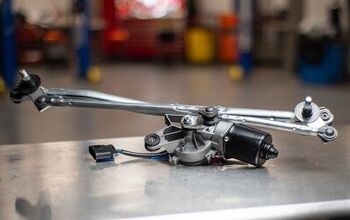Canton Coolant System Upgrades Dress Up Your Engine Bay
If you want to dress up the engine bay of your performance car while also adding serious durability and convenience, the upgraded aluminum cooling system tanks from Canton Racing Products are a great option. The welded aluminum construction looks far better than the plastic tanks that come from the factory and they are also far more durable, while the remote mounting aspect makes for easier coolant system filling.
OEM Plastic Coolant Reservoirs
If you are the kind of driver who keeps their engine bay spotless, you are likely familiar with the plastic coolant reservoir which accompanies your radiator. While cooling systems have evolved a great deal in the past few decades, the plastic coolant reservoirs haven’t changed much at all. Whether your car has a recovery tank or an expansion tank, the odds are good that it is comprised of cloudy plastic that discolors over time.
For drivers who care about the appearance of their engine bay, the shift from a whitish, clouded plastic to yellow and brown, sometimes with dramatically darker sections proves to be a major eyesore. Worse yet, as the plastic coolant reservoirs are exposed to extreme temperatures and dramatic changes in temperature, the material can get brittle and crack. When your coolant reservoir cracks and coolant leaks out, you are risking damage to your engine, so the aging plastic can prove to be far more than an aesthetic issue.
Fortunately, both the aesthetic and functional issues can be addressed by buying a new OEM reservoir, but like everything from the dealership, they aren’t cheap. Plus, after time, the new tanks will discolor and look terrible. That is why many people paint the reservoirs or buy a cover, but neither of those options address the functional concerns of aging plastic.
That is where the aluminum cooling system tanks from Canton Racing Products come into play.
Aluminum Reservoir Advantages
Canton Racing Products’ coolant tanks are constructed from .100-inch thick billet aluminum with TIG welded seams, which looks far better than the OEM plastic reservoirs. Of course, the brilliant aluminum finish will not discolor to an ugly mixture of yellow and brown, but every aspect of the Canton tanks is significantly more durable than the OEM tanks.
In addition to the durable construction of the tank itself, these aluminum tanks have machined necks and welded line fittings, insuring the best possible seal against the cap and the hoses. Plus, in vehicles where the reservoir also serves as the filling point, the ability to mount these tanks anywhere you want can make filling a whole lot easier.
Expansion Versus Recovery
If you are shopping for upgraded cooling system components, but you aren’t sure whether you need the Canton expansion tank or recovery tank, here is a quick rundown of how they differ.
The key difference between an expansion tank and a recovery tank is whether or not it functions under pressure. The expansion tank is part of a pressurized system, with a pressure-rated cap similar to what is found on many radiators. In many cases, the expansion tank serves as the fill point for this type of cooling system, often when the radiator is inaccessible. Also, when an expansion tank is part of the system, the radiator may not have a pressure-relieving cap, as the expansion tank handles that task as well, but the key function of this type of tank in a pressurized system is to give the coolant somewhere to go when it expands. When coolant heats up, it expands and creates pressure within the system. The expansion tank allows for room within the pressurized system for the coolant when it gets hot while also allowing for extra coolant capacity.
On the other hand, a recovery tank is a non-pressurized component, serving as more of an overflow for the expanding coolant. The recovery tank is generally connected to the pressure relief portion of the radiator, so when coolant expands and pressure gets too high, the coolant flows into the recovery tank through the bottom. As the coolant cools and pressure levels drop, the coolant in the tank flows back through into the radiator.
Since the recovery tank is connected to the pressure relief portion of the coolant system, it can be plumbed to either a radiator or an expansion tank. However, the recovery tank should not be confused with a basic catch can overflow, where the coolant flows into the top and sits there until it is manually emptied.
Canton Racing Products offers both an expansion tank and a recovery tank, both of which are made from TIG welded aluminum for durability and a beautiful appearance. Both have integrated fittings with a machined neck, with the recovery tank including a clear tube sight gauge on the side, letting you easily check to the level of your coolant.
Photo Courtesy of Brad Ziegler
Aluminum Supercharger Tank
Just about every vehicle on the road today has either an expansion tank or a recovery tank, but factory supercharged vehicles like the Ford Mustang Shelby GT500 or the Dodge Challenger SRT Hellcat have an additional reservoir. The supercharged engines in these muscle cars have a dedicated cooling system that helps to reduce the temperature of the air being forced into the engine, commonly called a low temperature cooling loop. This system operates independently of the traditional engine cooling system, featuring its own radiator, pump and reservoir, but sadly, the reservoir for this system is often plastic as well.
Fortunately, Canton Racing Products has a solution for this as well, and their supercharger tank adds an extra bit of aftermarket flare to the engine bay. In addition to the TIG welded .100-inch aluminum construction, the Canton supercharger tank has a cap that is similar to the cap on a racing fuel cell. This design is lower profile than most stock cap designs, reducing the amount of space taken in the engine bay while leaving no question that this is an aftermarket upgrade.
If you are looking to replace the plastic coolant reservoirs in your car, truck or SUV, you should definitely check out the offerings from Canton Racing Products.
*This is a sponsored article
Patrick Rall has been covering the automotive industry for over a decade, but was born into car culture. Having grown up in his father's performance shop, he spent extensive time at the track, driving and wrenching on various types of vehicles.
More by Patrick Rall



































Comments
Join the conversation